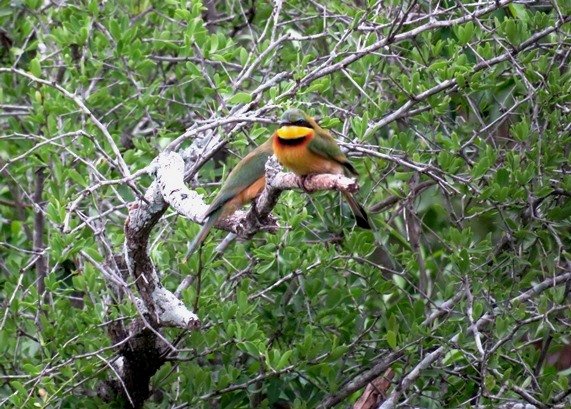Little bee-eaters in a Gymnosporia

Author: Ivan Lätti
Photographer: Ivan Lätti
Little bee-eaters are slender and brightly coloured. Green upper parts, a yellow throat above a black line fading into brown on the chest and buff on the belly ensure it being noticed. Only 16 cm long, it is the smallest African bee-eater. The sexes are alike.
These birds are tame, moving around solitary or in small groups during the day but roosting in large flocks at night in trees. It breeds in a small burrow in a sandy bank or the wall of an antbear hole, the couple nest solitary, not communally. From two to six white eggs hatch in 19 or 20 days, both parents participating in feeding the young for about 29 days.
The diet is predominantly insects, especially bees, wasps and hornets, which are caught in the air flying from an open, often low perch. Before eating its catch, a bee-eater removes its sting by repeatedly hitting the insect on a hard surface (Maclean, 1993; Wikipedia).

